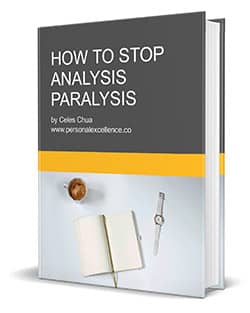
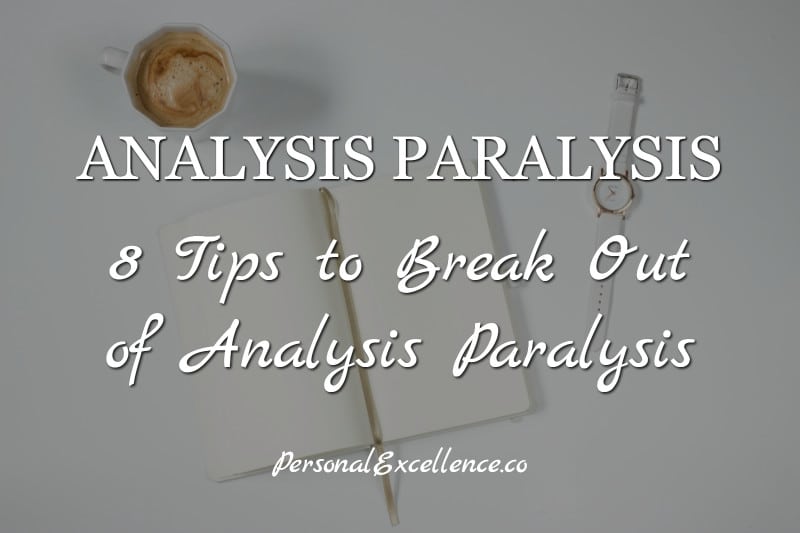
Have you faced analysis paralysis before? Do you tend to overthink your choices, to the point where you feel paralyzed and don’t make a decision?
If so, you’re not alone. Analysis paralysis is the state of overthinking a decision to the point that a choice never gets made. You face analysis paralysis when you…
- are overwhelmed by the available options,
- over-complicate the decision when it’s supposed to be quite a simple one,
- feel compelled to pick the “best” and “perfect” choice, thereby delaying any decision until you do your research, or
- feel a deep fear of making a wrong move, hence stalling yourself from making any decision, in case you make the wrong choice.
8 Tips to Overcome Analysis Paralysis
If you often face analysis paralysis, you are at the right place. As a perfectionist, I tended to face analysis paralysis for many of my decisions until I started changing my mindset and approach.
In this guide, I share 8 tips to break out of analysis paralysis. Note that this guide is best for short to mid-term decisions — for tips to break out of difficult life decisions, go here.
1) Differentiate between big and small decisions

(Image: Hiltrud Möller-Eberth)
The first step to cracking decision-making paralysis is to differentiate between big and small decisions, after which you give the decision a level of attention based on its importance.
3 questions to differentiate between big and small decisions:
- How important is this decision?
- Will this impact me a year from now?
- What’s the worst thing that could happen?
If the decision isn’t going to make a big difference a year from now and there are no serious consequences that will come out of it, then it is a small decision. Spend as little time as you need to nail this. Then, let go.
If the decision will have a major impact after a year and there are serious implications from making the wrong choice (such as marrying someone you don’t love), then it’s a big decision. Set aside time to think about it. Read my guide How To Make Life’s Hardest Decisions: 3 Decision Making Methods. For everything in between, give it some thought but don’t let it drag on for too long.
Using these 3 questions, you’ll find that few decisions are as important as you think. Most decisions have little impact on our lives. Only a small handful have the ability to affect our lives in the long run.
Examples of small decisions:
- Which hair conditioner to buy
- What color cable clips to buy
- What to eat for dinner (assuming you’re already making good food choices)
Examples of mid-term decisions:
- Whether to end a relationship
- Whether to collaborate with someone on a project
- Where to get your new home
Examples of big decisions:
- Whether to marry someone (or get divorced)
- What career path to go for
- Deciding your life purpose
- Whether to have kids
2) Identify your objective
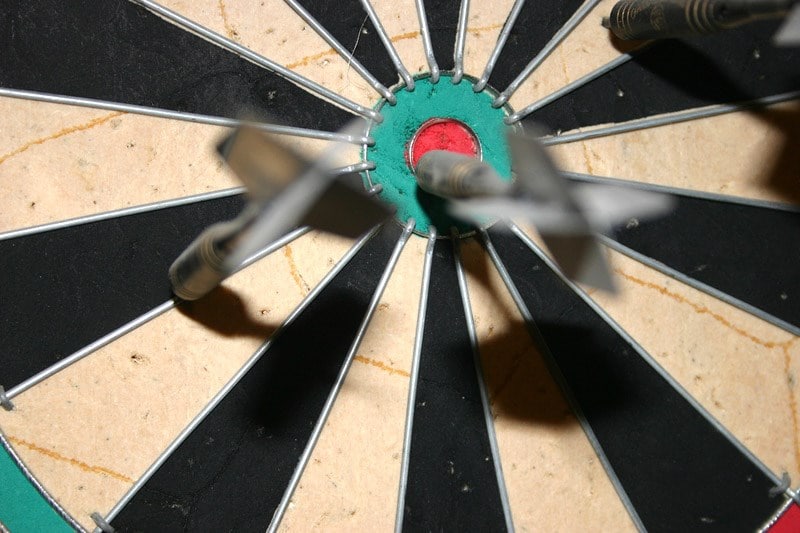
(Image: Jeff Turner)
Last week I had a coaching call with a client who asked me for advice between two job options. The first is to remain in his current job — a well-paying job, living where he is now, in a stable work environment and country. The other is a job overseas — a bustling city, a dynamic job with great responsibilities, in an environment he has never been in before.
Both jobs have their pros and cons. The former offers security and great financial rewards with a manageable job scope. The latter offers immense personal growth with some degree of uncertainty and pressure as everything will be new to him.
So I asked my client, “What is your vision for your life for the next few years?”
He said that he’s sick of the predictability in his routine. He feels that everything is the same in his current job and he’s not learning much. He feels that his goal for the coming period is to grow, learn about different things, and see other things in life. As he is in his early 30s, now is the best time to explore the world.
Then I said, “I think you just answered your own question. :) ” He went into deep thought for a few seconds, then he nodded and smiled.
Every option has its pros and cons. Without knowing your end objective, you’ll forever be debating the relative pros and cons of each choice without a meaningful conclusion.
- Before you dig into the options for your decision, ask yourself: “What is my end objective? What do I want to get out of this decision?” Identify your top two objectives, maximum three.
- Evaluate your choices based on your objective(s).
- As you do that, you will find that some options will stand out more strongly than the rest. These are the options you want to look at.
3) Perfection is not the key. “Moderately okay” is.
Unless you are dealing with a life-altering decision like who to marry and what career path to choose, perfection is not the key. Your goal is to pick a moderately “okay” choice in a fair amount of time, and then move on.
This may be shocking or reckless to some people, especially perfectionists. Shouldn’t perfection be our goal in everything we do? Well, not quite.
As a perfectionist, I’ve learned the hard way that every option has its pros and cons. Every option has its own set of considerations. The perfect choice is almost never available right there and then for every decision — it’s something that you have to hunt down and/or create. Because of that, picking the perfect choice comes at a very high cost, which means that making the perfect choice is a costly process.
The 80/20 rule comes into play: It takes 20% effort to achieve 80% of the gain of a decision. But to nail down the final 20% gain to achieve a 100% perfect outcome, you need to invest a huge amount of effort. This effort needs to be justified by the importance of the decision, which is why tip #1 is about differentiating between big and small decisions.
This means, either you
- Spend 10 hours (ballpark estimate) to hunt for the perfect choice in every decision. 10 decisions will take you 100 hours. Not to mention, all of us have a limited amount of mental energy to make decisions each day. This means realistically you only have enough brain power to make X good decisions each day, after which other decisions need to be deferred to the next day. OR
- Spend minimal time to make a moderately okay choice. Then, move on. Work on making the best out of your choice.
In scenario #2, because you take time to make an okay decision, you avoid the pitfalls of a terrible choice. At the same time, the time you save from not hunting down the perfect choice can be used to create value in other life areas. Even if your choice turns out to be not-so-good, (a) the act of selecting and moving on will help you achieve 10X more than being stuck in analysis paralysis, and (b) you use this experience to improve in future decisions.
Again, this applies to short- to mid-term decisions. If the decision has severe consequences, then take time to make the perfect choice. Read this guide instead.
4) Eliminate the bad options
When you have too many options, it clutters the decision-making process. One tip I give to my clients is to list all the available options. Then, eliminate the bad ones. You should be left with 3-4 options, which makes it easier to choose. Evaluate the remaining options against your end objective (see tip #2).
5) Let go of your childhood stories

(Image: charamelody)
I used to face severe analysis paralysis with purchase decisions. This was especially so with small ticket items that cost a few dollars or dozens or dollars, not business investments or big-ticket items costing hundreds to thousands of dollars. Funny, right?
Why is that? Since young, my dad repeatedly reminded me to be frugal. Every day, he would say to me, “钱很难赚,不要乱乱花” (in Mandarin, meaning “It’s hard to earn money. Don’t spend it carelessly”). Even though I’m already quite frugal, my dad kept criticizing me over many purchases because he felt that they were a waste of money. The items he would criticize were physical things in his sight, like stationery, household items, or clothes/shoes that I bought (but never excessively).
Such incidents built up over time — what I call childhood stories — made me very sensitive about buying anything. I would spend endless time bouncing back and forth between buying item A and item B when there were minuscule differences between the two. If I bought the “wrong” thing, I would be filled with regret.
Here, my analysis paralysis with such purchases was due to the childhood story with my dad. It had nothing to do with what I was trying to buy because logically my life wasn’t going to be destroyed by a wrong $1 purchase.
Another reason was that I grew up in an education system where there is no margin for error. In school, every little mistake we made was harshly criticized. We were taught to perceive every mistake as irreversible and life-changing. Teachers would punish us for making mistakes, such as asking us to slap ourselves or screaming at the student who made the mistake in front of everyone.
The belief that I formed during this period was “Mistakes are bad, mistakes can never be erased, and I’m a bad person if I allow mistakes to happen.”
Mentally wrapped up in these two stories, I became irrationally fearful of bad choices. Is this the best choice? Is there a better option? What if I don’t like this later on? What if there are hidden cons? That would mean that I have made a bad decision! I was often conflicted over small purchase decisions. I would avoid making any purchases so that I wouldn’t make a bad choice and regret it later.
Eventually, I realized that I was living in the shadow of these stories. Every decision has its pros and cons, and it’s ridiculous to think that I have made a bad choice just because I don’t like some things about it. Even if I have made a bad choice, it’s silly to beat myself up over it since it’s about learning and moving along. It’s more important to learn and focus on the positive, not the negative — of which the latter is something that the Asian culture is obsessed about.
If you constantly freeze when making decisions, perhaps you have a childhood story driving your behavior. My question to you: Do you have a childhood story driving your analysis paralysis? Why does it affect you so? How can you let it go?
More on childhood stories and how to let go of them: What Childhood Stories Are You Replaying Today?
6) Set a time limit
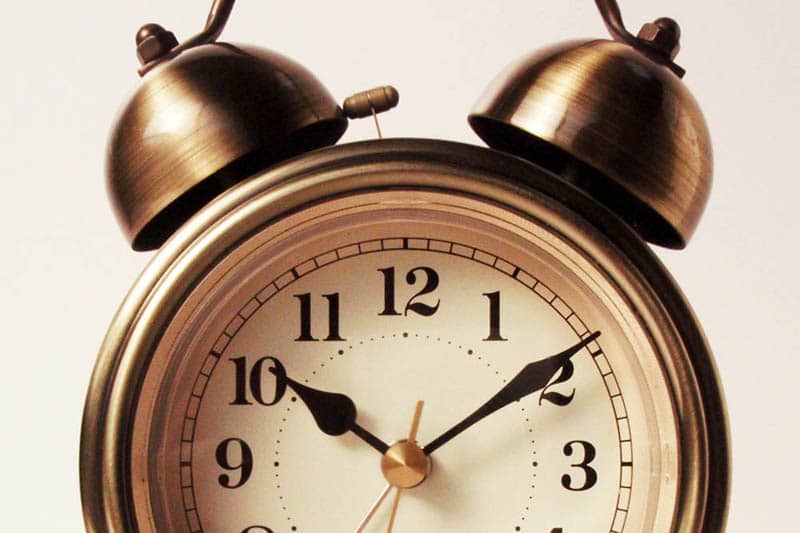
(Image: Duncan Hull)
Do you know the Parkinson’s Law? Parkinson’s Law says, “Work expands so as to fill the time available for its completion.” What this means is that your work will take however long you allow it to take. If you set aside 15 minutes for a task, it’ll take 15 minutes. If you set aside 30 minutes, it’ll take 30 minutes. If you don’t set a time limit, it may take forever!
This is the same in decision-making. When you don’t set a time limit for your decisions, each decision can expand to take up your entire consciousness as you find new details to analyze.
To solve this, set a time limit. Your time limit should be based on the importance of the decision (see tip #1). Personally, I set aside no more than a few minutes for small decisions, and no more than a week for mid-level decisions. For big decisions, I take as long as I need, though I usually come to a conclusion in two months.
If you haven’t made up your mind by then, make the best choice based on the available information. Remember that this time limit is based on the importance of the decision. Spending more time than needed means letting the decision take up more time than it is worth. Close it and move on to other things.
7) Get a trusted opinion
I often do this when I’m buying something or creating a graphic and can’t make up my mind. Usually I narrow it down to two options, and then I ask someone for their opinion. If their recommendation makes sense, I will go with it. If not, I will pick the one I prefer. Either way, getting their opinion helps me arrive at an answer faster.
Consult someone with insight into what you’re asking about. For example, if I’m buying a video camera for my YouTube channel, I’ll ask someone with knowledge of video cameras, not some random guy. If I want to start an online business, I’ll ask someone with proven success in online businesses, not people who have never started a business before. For this reason, I find it worthwhile to pay and get expert advice from specialists who know what they are doing. It helps me cut through the noise, get the information I need, and make the right choice.
Check out Day 16 of Be a Better Me in 30 Days on seeking advice.
8) Channel your energy into bigger goals
If you are obsessing about every little thing even though it has no big impact, perhaps you have outgrown your routine. It’s time to channel your energy into bigger goals.
Whenever I obsess about little things, I see it as a sign that I have excess energy that is not being put to good use. “What are my bigger goals that I can work on right now?” I would ask myself. Be it creating new articles, producing new videos, or launching a new project, I would work on these right away. As I shift my focus to my bigger goals, I gain perspective and interestingly, become decisive with the little decisions.
If you often face analysis paralysis with little decisions, here is my question to you: What are your goals for the next few years? Is there any goal you are procrastinating on? Work on them instead. As you shift your focus to your higher-level goals, you gain more experience and become better at making good decisions quickly.
To You
Do you experience analysis paralysis? How can you break out of your analysis paralysis using the tips above? :)
This article is about tackling day-to-day decisions. For tackling hard, long-term decisions, read How To Make Life’s Hardest Decisions: 3 Decision Making Methods

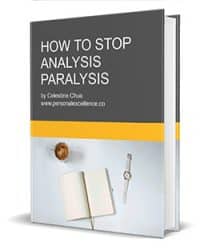
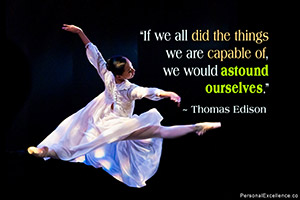
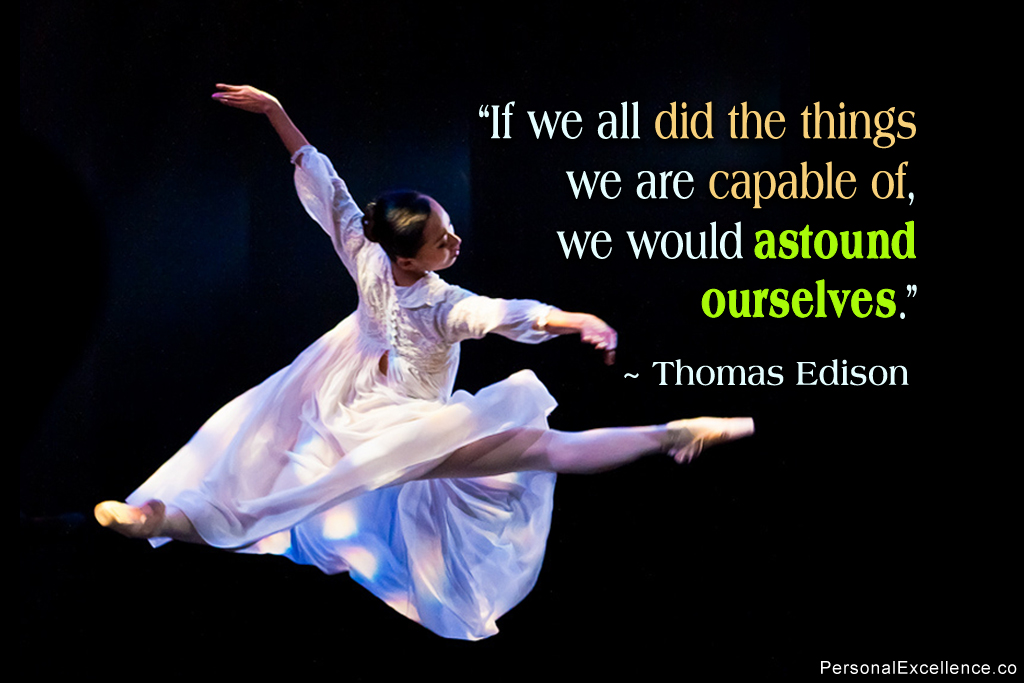


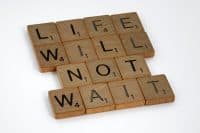



 Thanks for reading. If you like my free articles, join my private email list and get my latest updates and articles sent right to your inbox.
Thanks for reading. If you like my free articles, join my private email list and get my latest updates and articles sent right to your inbox.